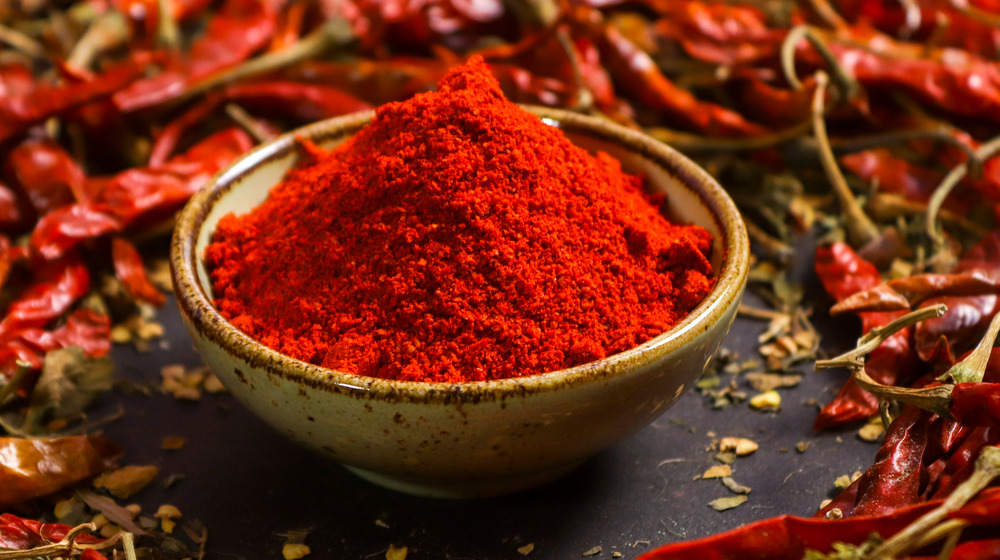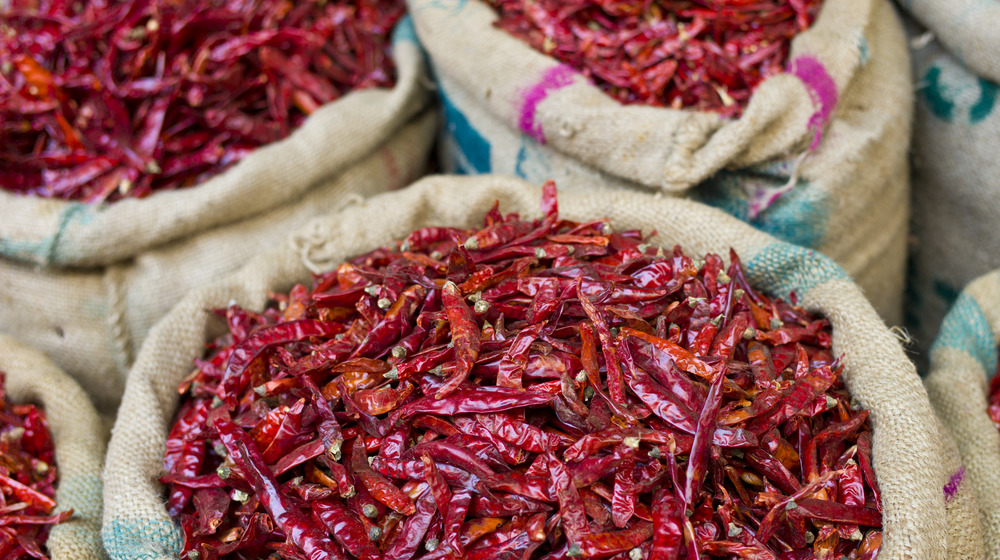Everything You Need To Know About Capsaicin
Most of us are familiar with the sensorial differences between eating spicy and mild foods — a plate of tomato sauce coated pasta doesn't quite have the same punch as a Vindaloo curry, after all! But have you ever stopped to think about what makes certain foods difficult or even downright painful to eat? As noted by the Science of Cooking, you have capsaicin to thank (or blame) for that.
Capsaicin is the key chemical component responsible for spiciness in chili peppers. As a naturally occurring compound and antioxidant, Healthline states that capsaicin has been used in many ways for millennia. A study done by Cornell University shows that the antimicrobial properties of capsaicin also help to prevent food from spoiling too quickly in hotter climates. Be it in food, in medicine, or even in pepper spray, capsaicin targets pain receptors, creating a burning sensation, and — at times — an endorphin rush. (Anyone who has taken a bite of maybe-too-spicy food can confirm the mouth coating feeling that takes over when capsaicin kicks in.) The Science of Cooking warns that the fat-soluble nature of capsaicin means drinking water will only make the pain worse; instead, drink milk or eat bread for relief.
Incorporating Capsaicin into a Healthy Lifestyle
Penn Medicine University confirms the various health benefits associated with capsaicin, including pain management, weight loss, and reduced gut inflammation. While foods containing capsaicin can be responsible, Healthline suggests trying lotions and supplements to target specific receptors in the body. For anyone who's fought to finish a spicy meal, pain relief through capsaicin might seem counterintuitive! However, Penn Medicine University states that repeatedly stimulating pain receptors makes your body process pain differently. This is why research has shown that with constant exposure we can adapt to spicy foods (via LifeHacker). Psychology Today suggests there is also an evolutionary benefit to eating capsaicin for humans living in certain environments, resulting in a cultural preference for spicy foods.
Since capsaicin is found in a variety of peppers, it can easily be added to many dishes. If you are new to spicy food, Serious Eats says it is best to start slowly and work your way up. Nothing will make you fear spice like overindulging on your first try! For inspiration for your next spicy feast, look towards the top spicy cuisines, such as Thai, Indian, and Chinese (via PepperScale).

